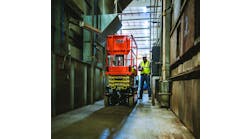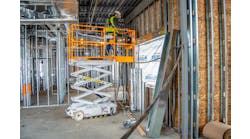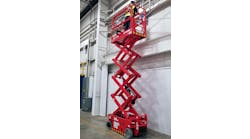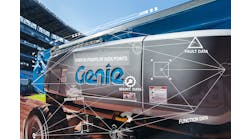As part of a series of interviews with pump manufacturers, RER recently spoke with two Godwin Pumps executives — Ron Askin, vice president of sales, and Per Ohstrom, vice president marketing and business development — about technological changes in pumps, the marketing of pumps, how the company has responded to the downturn, safety and training, and the computerization of pumps.
RER: What is new in your product line technologically?
Askin: The newest products that we’ve developed basically expand our HL line, we’ve introduced an HL 260 and two high-pressure hydraulically driven pumps. We’re continuing to expand our range, making sure that we have the right pump for the application, that we’re not stretching the pump that might not be ideal for it.
What are some of the trends you expect to see in the pump industry?
Ohstrom: We’re seeing a couple of main trends. One is there is more interest in rental as opposed to buying, for the same reason that everyone else rents: you don’t have the capital effort, you have access to recent-model equipment and in good condition, and also know-how, because if you rent a pump straight up, you may not have the knowledge needed to really install and operate it properly, or even to select the right type of pump. That gives us some more opportunity for systems selling so we design the system, we rent the pumps, and all the pipes and hoses that are needed with the rent. It’s really solution selling, a one-stop shop for customers who are in need.
Another trend would be on the environmental side, primarily driven by the Tier-4 regulations as with other types of equipment. Unfortunately it drives the cost a little bit because those engines are, on the average, more expensive to build. So there’s definitely a switch going on into those kinds of cleaner-running engines, driven by legislation.
What are some of the changes your customers, particularly in the rental market but end users as well, are asking for?
Ohstrom: There are a couple of changes going on, one is more attention to noise and noise reduction, we get a lot more requests for customers for pumps that are sound-attenuated, especially those to be used near or in residential neighborhoods. Pumps tend to be loud, especially if it’s a bigger sewer bypass where we might have several units running at the same time.
Any developments and changes you are seeing or expect to see in the marketing of pumps in rental?
Ohstrom: It’s really more problem solving and selling solutions. So instead of selling or renting a pump we sell a customer the ability to move water or move liquid from one point to another. It’s more of a turnkey approach.
What effects has the economic downturn and construction slump had on your business and on the pump industry in general? Do you see any signs of a turnaround or improvement?
Askin: The downturn certainly has affected us the past couple of years, but we’ve been such a busy organization with the growth that we’ve experienced over the past 10 years, we took an opportunity to look at our systems. We implemented a new computer system, we implemented several processes to improve how we do business and make it more efficient and combined with a focus on solution selling, not just offering products to people but actually training our technicians and engineers, in exactly what that customer is up against and what sort of solutions they need. We think we’ve weathered this storm a lot better than what is typical for our industry, and we see it as a long, slow climb out of a few lean years. But we’re very optimistic about how we’re doing this year and what’s coming up.
What do you expect economically in the rest of 2010 and 2011?
Askin: We’re a little sheltered from it because we have such a broad line of business, for example, we might have a branch or a distributor in California that used to do a lot of housing work, that market has dried up, but at the same time some of the work in oil fields and other areas has picked up and is very strong. So as we’ve covered broadly across the markets, we’re optimistic about it. But I don’t think we’re going to immediately have every market come back.
In many types of equipment, computer technology is playing a major role in the evolution of that type of equipment. Is that occurring in pump technology as well, and, if so, how?
Askin: It really made a significant difference in pump technology on two fronts. Number one in diesel engines we developed what we call a prime guard controller. That control panel controls the engine and you can control it based on parameters like level of the fluids you’re pumping, the pressure in or out of the pump, you can control it on temperature, on time, and you can have that engine adjust itself to the parameters so rather than having to rely on an operator to interpret, this system will do it for you so the pumps all of a sudden run more efficiently and they are a lot easier to operate because they become somewhat automatic.
On the electrical side, there’s a lot of technology that has been out there for years — soft-start panels, variable-frequency drives. It’s been out there and it’s been available, but that technology was so expensive that it wasn’t an option because it would be cheaper to hire an operator to maintain the pump 24 hours a day or to operate the pump. Now the price points have come down to the point that it’s reasonable to rent and we have available in our rental fleets now VFDs through 600 horsepower, soft-starts in the same range. If you’re running that pump on a generator it will reduce the size of generator you need to run the pump and it also gives you many of those same advantages I mentioned before about the time guard, it being able to adjust the pump to the conditions.
How big a role does and should a manufacturer play in the training of rental company personnel? Mostly in what areas?
Ohstrom: We are really integrated so we cross-train our personnel up and down the value chain. Our engineers spend time on the shop floor; they are very familiar with the applications and service aspects of the equipment. We also spend a lot of effort on training our salespeople and all customer-facing people on equipment application but also system design, how to design an application, and product knowledge. We also offer the same type of training to our distributors.
We train rental people; it is in our interests that when a Godwin pump is in operation that it is being used correctly and performing the way it should be. So we try to provide focus on correct design and end-user applications.





